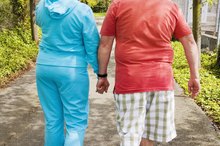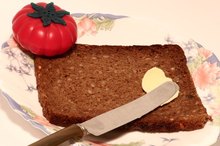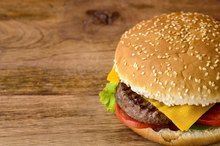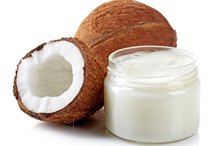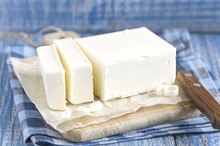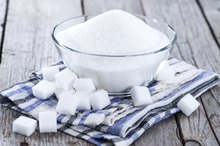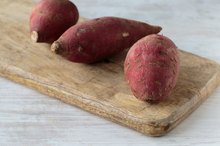What does fact checked mean?
At Healthfully, we strive to deliver objective content that is accurate and up-to-date. Our team periodically reviews articles in order to ensure content quality. The sources cited below consist of evidence from peer-reviewed journals, prominent medical organizations, academic associations, and government data.
- Mayo Clinic: Triglycerides
- Mayo Clinic: Top Five Foods to Lower Your Numbers
- Cleveland Clinic: How Foods Affect Triglycerides
The information contained on this site is for informational purposes only, and should not be used as a substitute for the advice of a professional health care provider. Please check with the appropriate physician regarding health questions and concerns. Although we strive to deliver accurate and up-to-date information, no guarantee to that effect is made.
Mayo Clinic Triglyceride Diet
Like cholesterol, triglycerides are a kind of fat that circulates through the body in the bloodstream 1. Triglycerides store calories that are later used for energy 1.
However, high levels of triglycerides are correlated with increased risk of heart disease 1. Less than 150 milligrams per deciliter (mg/dL) is considered a normal level, according to the Mayo Clinic website 1.
A level of 150 to 199 mg/dL is borderline high, while 200 mg/dL and above is considered high. Mayo Clinic states that the same diet and lifestyle changes that help lower cholesterol and improve general health will help lower triglycerides 12.
Limit Fat and Cholesterol
Mayo Clinic’s dietary recommendations for lowering triglycerides and cholesterol emphasize reducing or eliminating foods containing saturated fat, trans-fats and cholesterol 13.
Saturated fat comes from most animal products, so choose only the leanest cuts of meat and low-fat or fat-free dairy products. Trans-fats are present in fried and baked goods and in any product that lists partially hydrogenated oil as an ingredient.
Reduce Sugar Consumption
Cheese Diet to Lower Triglycerides
Learn More
Foods made with white flour or refined sugar, according to Mayo Clinic, raise triglycerides 13. Additionally, any calories in excess of those you use per day are stored as triglycerides 1.
Sugar consumption adds calories to your diet with little or no nutritional benefit. Eliminating sugary foods from your diet and reducing calorie consumption will help lower triglyceride levels.
Substitute Healthy Fats
Omega-3 fats contribute to healthier cholesterol and triglyceride levels and reduced risk of heart disease, according to Mayo Clinic 1. While the recommended daily fat intake is 25 to 35 percent of total calories, no more than 10 percent of those calories should come from saturated fats found in meat and dairy products.
Increase Fiber
Components of a Triglyceride
Learn More
Whole grains, fruits and vegetables offer several health advantages, according to Mayo Clinic 1. Fiber helps carry lipids away from artery walls, preventing arteriosclerosis. Sterols and stanols found in food from plant sources contribute to a lower risk of cardiovascular disease.
Finally, fiber-rich foods are high in nutrients and low in calories, giving you more dietary benefit and reducing the desire to overeat. Since maintaining a healthy weight is critical in lowering triglycerides, Mayo Clinic recommends including plenty of whole grains, fruits and vegetables in your daily diet 1.
- Whole grains, fruits and vegetables offer several health advantages, according to Mayo Clinic 1.
- Sterols and stanols found in food from plant sources contribute to a lower risk of cardiovascular disease.
Eliminate Alcohol
High triglyceride levels are associated with excessive use of alcohol. The Mayo Clinic recommends limiting alcohol consumption to no more than one drink per day for women and two drinks per day for men 1. However, since even moderate alcohol use can increase triglyceride levels, abstaining is the better choice.
Related Articles
References
- Mayo Clinic: Triglycerides
- Mayo Clinic: Top Five Foods to Lower Your Numbers
- Cleveland Clinic: How Foods Affect Triglycerides
- Schwarzova L, Hubacek JA, Vrablik M. Genetic predisposition of human plasma triglyceride concentrations. Physiol Res. 2015;64 Suppl 3:S341-54.
- Parhofer KG, Laufs U. The diagnosis and treatment of hypertriglyceridemia. Dtsch Arztebl Int. 2019;116(49):825-832.doi.10.3238/arztebl.2019.0825
- Clifton PM. Diet, exercise and weight loss and dyslipidaemia. Pathology. 2019;51(2):222-226.doi.10.1016/j.pathol.2018.10.013
- Hooper L, Summerbell CD, Thompson R, et al. Reduced or modified dietary fat for preventing cardiovascular disease. Sao Paulo Med J. 2016;134(2):182-3.doi.10.1590/1516-3180.20161342T1
- Harris KK, Zopey M, Friedman TC. Metabolic effects of smoking cessation. Nat Rev Endocrinol. 2016;12(5):299-308. doi:10.1038/nrendo.2016.32
- Brown JD, Buscemi J, Milsom V, Malcolm R, O'neil PM. Effects on cardiovascular risk factors of weight losses limited to 5-10. Transl Behav Med. 2016;6(3):339-46. doi:10.1007/s13142-015-0353-9
- Wang Y, Shen L, Xu D. Aerobic exercise reduces triglycerides by targeting apolipoprotein C3 in patients with coronary heart disease. Clin Cardiol. 2019;42(1):56-61.doi.10.1002/clc.23104
- Oh B, Sung J, Chun S. Potentially modifiable blood triglyceride levels by the control of conventional risk factors. Lipids Health Dis. 2019;18(1):222.doi:10.1186/s12944-019-1134-0
- Klop B, Do rego AT, Cabezas MC. Alcohol and plasma triglycerides. Curr Opin Lipidol. 2013;24(4):321-6.doi:10.1097/MOL.0b013e3283606845
- Nasioudis D, Doulaveris G, Kanninen TT. Dyslipidemia in pregnancy and maternal-fetal outcome. Minerva Ginecol. 2019;71(2):155-162.doi:10.23736/S0026-4784.18.04330-7
- Bello-chavolla OY, Kuri-garcía A, Ríos-ríos M, et al. Familial combined hyperlipidemia: Current knowledge, perspectives, and controversies. Rev Invest Clin. 2018;70(5):224-236.doi.10.24875/RIC.18002575
- Koopal C, Marais AD, Visseren FL. Familial dysbetalipoproteinemia: an underdiagnosed lipid disorder. Curr Opin Endocrinol Diabetes Obes. 2017;24(2):133-139.doi.10.1097/MED.0000000000000316
- Akins JD, Crawford CK, Burton HM, Wolfe AS, Vardarli E, Coyle EF. Inactivity induces resistance to the metabolic benefits following acute exercise. J Appl Physiol. 2019;126(4):1088-1094. doi:10.1152/japplphysiol.00968.2018
Resources
Writer Bio
Writing since 1981, Dawn Williams is managing editor and columnist for "Chicagoland Senior News." Her work has appeared in the "Chicago Tribune Sunday Magazine," "Country Sampler," "Your Next Step Magazine," "Life Newspapers," the "Kane County Chronicle," and websites focusing on health and fitness, parenting and senior issues.

